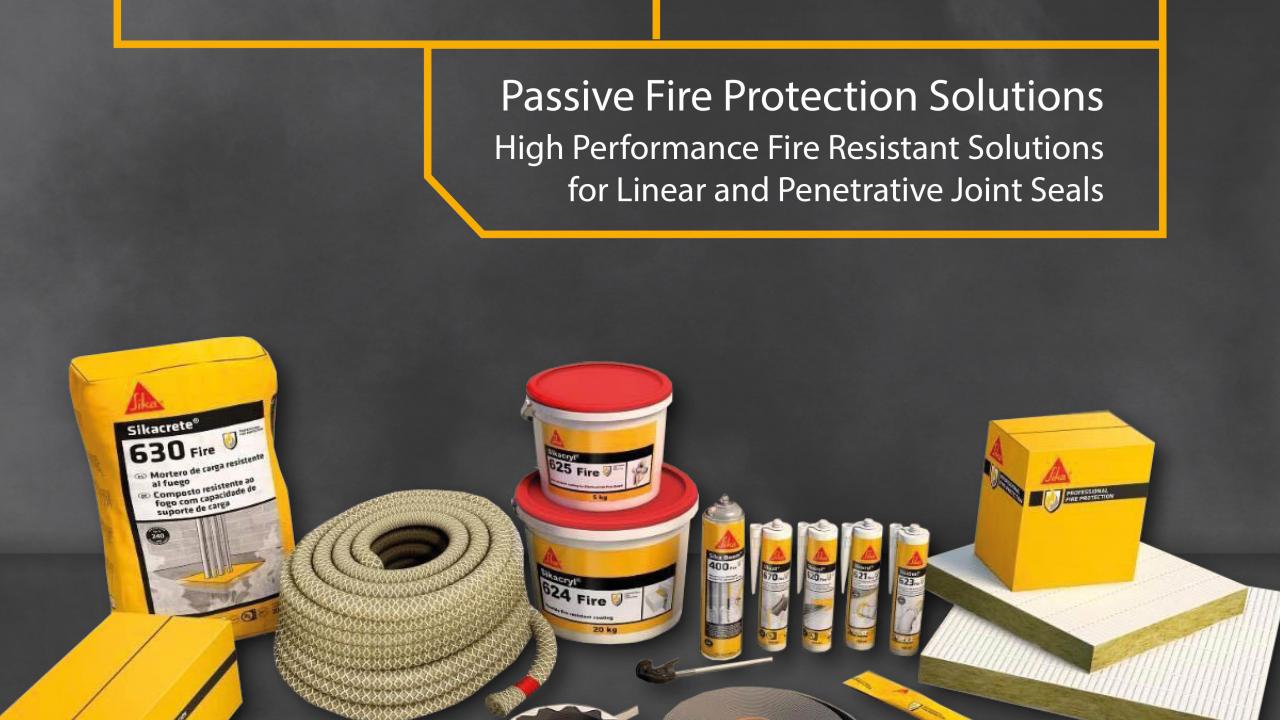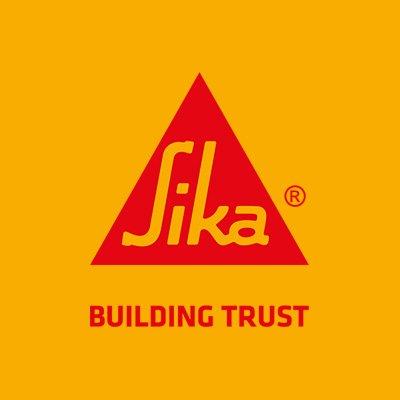

A specifier's guide to passive fire protection products
What is a passive fire protection strategy, why do buildings need one and most importantly, what do specifiers need to consider when choosing products for their next project? John Gardner, Specification Manager from leading speciality chemical manufacturer Sika Limited discusses the importance of taking a more active approach to passive fire protection.
Active and passive fire protection
When you think about ways to protect a building from fire, chances are you may think of smoke alarms, fire blankets, extinguishers, sprinkler systems – all extremely important pieces of equipment but all examples of what is known as active fire protection. Put simply, these all require a degree of action or motion to work and are critical to alerting occupants to the outbreak of a fire and helping to extinguish it.
An important part of passive fire protection is fire stopping and compartmentation. This can relate to a wide range of materials used within a building, such a fire doors and fire-resistant walls and flooring, but also specialist products that help restore the fire resistance of walls and floors disrupted by linear seals, cavity barriers or penetration services. Such passive fire protection is designed to ‘activate’ once a fire has already taken hold and is essential for helping to contain and control it within defined compartments. Not only is passive fire protection important in reducing the potential damage a fire can cause to a building but above all, it can help save lives by preventing fire spreading to increase the time that people can be safely evacuated.
2.jpg)
Contain and control
Unlike active fire protection, some of the most effective firestopping or passive fire protection products are those that building occupants may not even be aware of. However just because they can’t be seen doesn’t mean that they aren’t an integral part of the building fabric. In fact, passive fire protection is required in nearly all public use buildings across the hotel, leisure, healthcare and education sectors, as well as in residential and commercial high-rise buildings, transport infrastructure such as airports, large scale shopping centres and industrial facilities.
Most buildings like these are naturally interspersed with multiple utility and network services such as cables, cable trays, pipes and ventilation ducts, and this results in countless penetrations through which flames, smoke and heat can quickly spread. To protect adjoining rooms and areas and to prevent further fire propagation throughout the entire building, it’s essential that measures are taken to stop fire in its tracks. This is where specialist products such as silicone sealants, acrylic sealants, PU foams, fire boards, pipe collars, load bearing compounds, pipe wraps, and backer rods should be considered.
Fire reaction and resistance
As well as being aware of the areas within a building which can benefit from passive fire solutions, it’s important to understand what level of protection is required and what the different ratings and standards mean. It’s also vital that specifiers and specialist passive fire protection product manufacturers can work together to make sure that the correct firestopping products are used in the correct place, and in the correct way.
Fire testing is, quite rightly, a very complex process that is difficult to summarise but there are a number of frequently used terms that specifiers should be familiar with. It’s particularly important to understand the difference between ‘reaction to fire’ and ‘resistance to fire’.
Reaction to fire describes how a material contributes to the development and spread of a fire. Typically, reaction to fire is determined for a single material or product such as a wall covering or joint sealant, and not for a system or section, such as a wall including the linear joints and any penetrations. Resistance to fire can be determined according to various standards but EN 1366 is the most relevant in Europe and can be considered as the baseline.
Resistance to fire considers the ability of a building element to prevent the passage of heat and flames from one side to another. Typically, such building elements are walls or floors including any joints and penetrations such as windows and doors. This means that it’s not only a specific material or product, but an entire system or building section that has to be tested.
Fire resistance is tested in relation to a building element’s level of integrity (referred to in tests by the letter E) and insulation (similarly, referred to by the letter I). Integrity focuses on the building element’s capability, when exposed to fire on one side, to prevent the passage of flames and hot gases to the unexposed side. Insulation looks at how well the building element can limit the amount of heat transference when exposed to fire on one side. Fire resistance is therefore based on the time it takes for either heat, smoke or fire to compromise the integrity and insulation of a system and this is often shown in minutes from 15 to 240.
Technical Support
Many factors can influence the fire resistance and classification of a building element and many buildings will require a bespoke passive fire protection strategy. This is why supply chain collaboration is so important so that specifiers can tap into the expertise of manufacturers.
At Sika, we can provide detailed technical evaluations to assist with the correct specification of passive fire protection products for linear joints and seals, cavity barriers and penetration seals. Here we would consider factors such as the building materials involved (concrete, steel etc), orientation (walls or floors), the thickness of the element, the joint dimension (width and depth), the joint configuration (single seal exposed, unexposed, double seal etc) and expected joint movement.
We understand the importance of protecting all buildings from the devastating effects of fire and ensuring the safety of all building users, which is exactly why our offering extends much further than just our products. We have also invested heavily in the training of our technical team so that we are qualified to advise and assist our clients in devising and implementing a robust passive fire protection strategy.
To discover more about the Sika passive fire protection range click here.
1.jpg)

